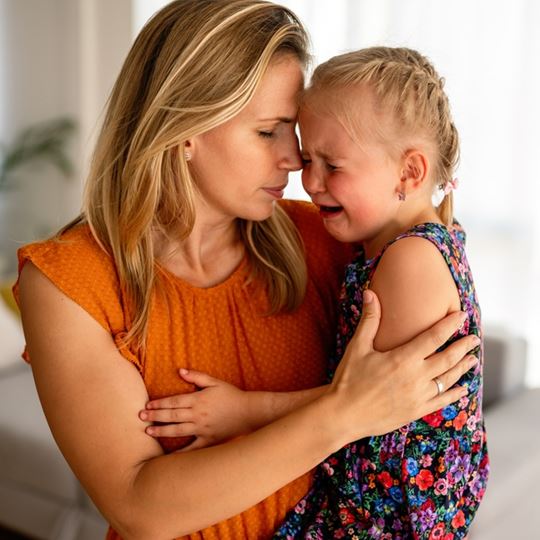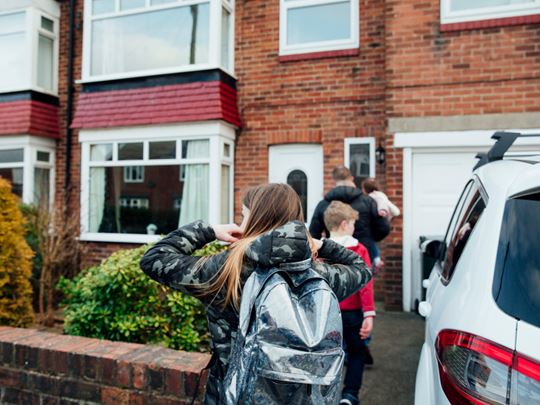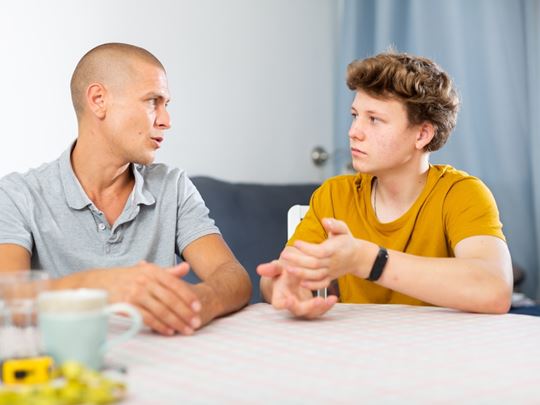Expressing emotions for children in care
There are many reasons why a child in care may find it difficult to express their emotions. For example:
- They may not have learned the language needed to express feelings of anger
- They may not have had a reliable adult around them to help them develop the skills needed to regulate their emotions
- They may be living in a constant state of fight-or-flight due to their difficult early experiences
Instead, young people in care may show big feelings by shouting, using harsh words, throwing objects, crying, hitting or pushing others.
Your role as a foster parent is to show them that their feelings are valid and help them manage these emotions in the moment. You’ll also guide them to find alternative ways to express these feelings and ways they can make themselves feel better too.
Identifying anger
It’s important to let your child know that they will experience a variety of emotions throughout life, including anger and frustration. But it’s what they do with those feelings that matter. Emotional identification can be a great way to do this.
There are simple things you can try, depending on your child’s age, to help them identify how they are feeling. And once you both understand what’s driving these emotions, it can make it easier to manage.
Some useful ways to identify emotions include:
- Emotion charts
- Make an anger thermometer with three colours representing a little angry, medium angry, and very angry. What are they feeling and what does each stage of anger look like? Think of some things they can do for each stage of the thermometer to help them calm down (play with sensory toys, go for a walk, rip some paper, etc.)
- Drawing faces based on how they are feeling
- Discussing scenarios to help them identify and label their anger
Activities to help manage feelings of anger for children
Read about some of the activities you can try to help a child who’s experiencing anger below...
1) Use mindfulness
Mindfulness activities such as drawing, blowing bubbles, playing with balloons, going on a mindfulness walk, or some simple breathing exercises can be used to diffuse the situation when your child becomes upset, angry, or frustrated. They can help calm things down before it escalates.
2) Get arty
Getting creative and using art can be a brilliant way to help your child channel and express their emotions. The best thing is art can be used at pretty much any age. Paints and crafts are great for younger children and sketching and colouring can be very soothing for older children.
If your child is feeling angry but is unable to verbally express their feelings, suggest drawing or painting together as a way to visually represent and release their anger.
3) Journaling
Journaling provides the opportunity for children to explore and identify their emotions, express their fear and uncertainty, and feel and process feelings like anger, frustration, and sadness. Suggest creating an anger journal to help them express their emotions, or for more enthusiastic writers, try asking them to create short stories to externalise their emotions.
4) Get moving
Physical activities can have a very positive impact on releasing built-up tensions and anger. Your child doesn’t have to go on a long run to get this positive boost. Any physical activity will do, so think about what they enjoy and go for it. It can be running, football, basketball, skipping, yoga, or even a calming walk outside.
5) Create a calming corner
A calming corner somewhere in the house with a designated space for calming activities can be beneficial for a child who’s feeling angry. Choose a quiet space and create a little calming haven. Add items such as a beanbag or swing chair, soothing lights, art supplies, and sensory toys.
6) Read stories together
There are lots of amazing books and stories about children experiencing anger for all ages, including:
- When Sophie Gets Angry, Really, Really Angry by Molly Bang
- Cool Down and Work Through Anger by Cheri J. Meiners
- Angry Octopus by Lori Lite and Max Stasuyk
- The Secret to Clara’s Calm by Tamara Levitt
- Don’t Rant and Rave on Wednesdays by Adolph Moser
These are all lovely and helpful books you can enjoy and read together. Keep a selection available and suggest reading one when you sense that a child in your care may be experiencing feelings of anger.
Working together to improve children’s lives
At Orange Grove, we’re here for you, your family, and the child in your care, whenever you need us. We’re always available to support you and give you the training and advice to help.
If you would like to know more about fostering with us or transferring foster care agencies to Orange Grove, we’d love to help. Complete our online enquiry form and we’ll answer any questions you might have.






